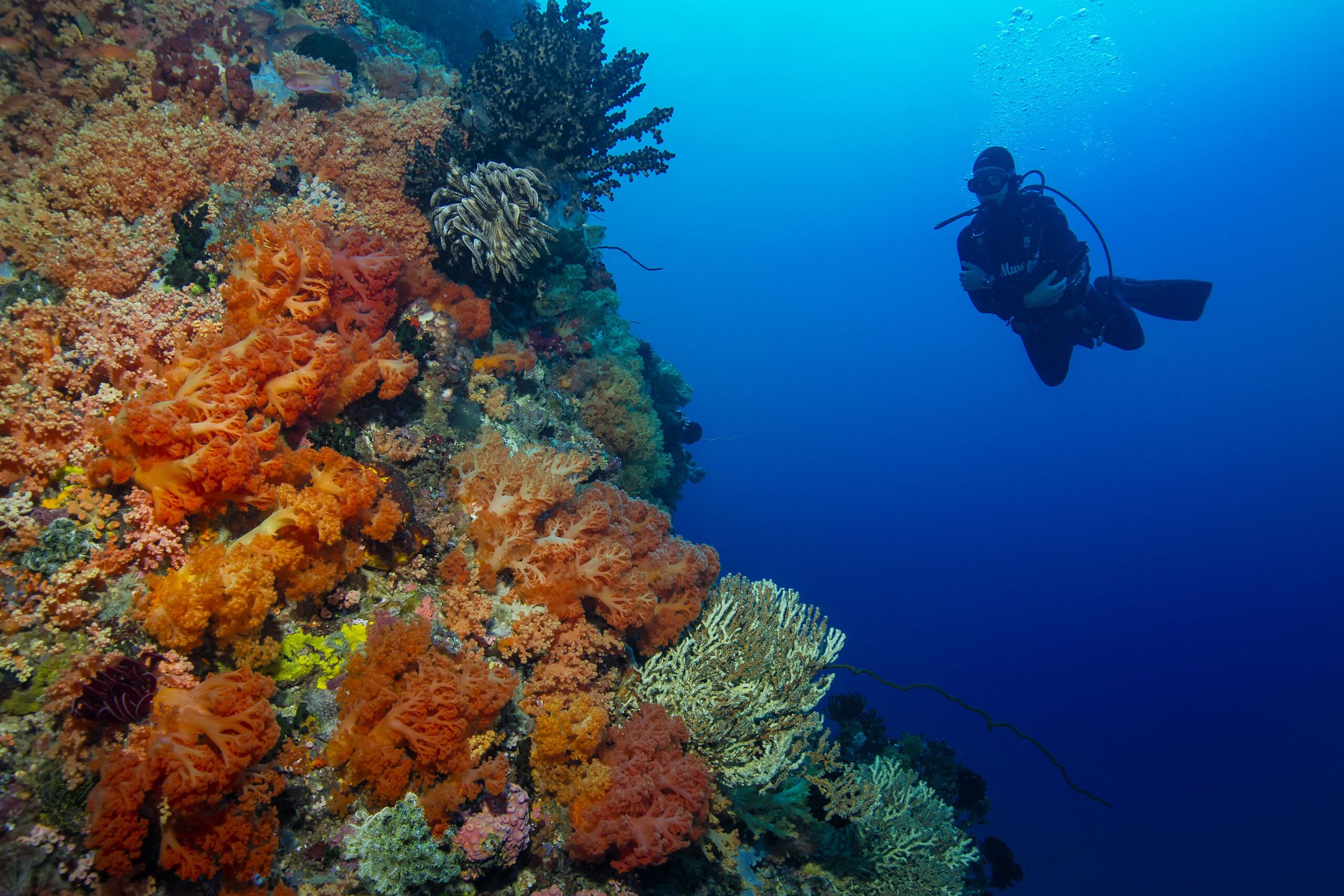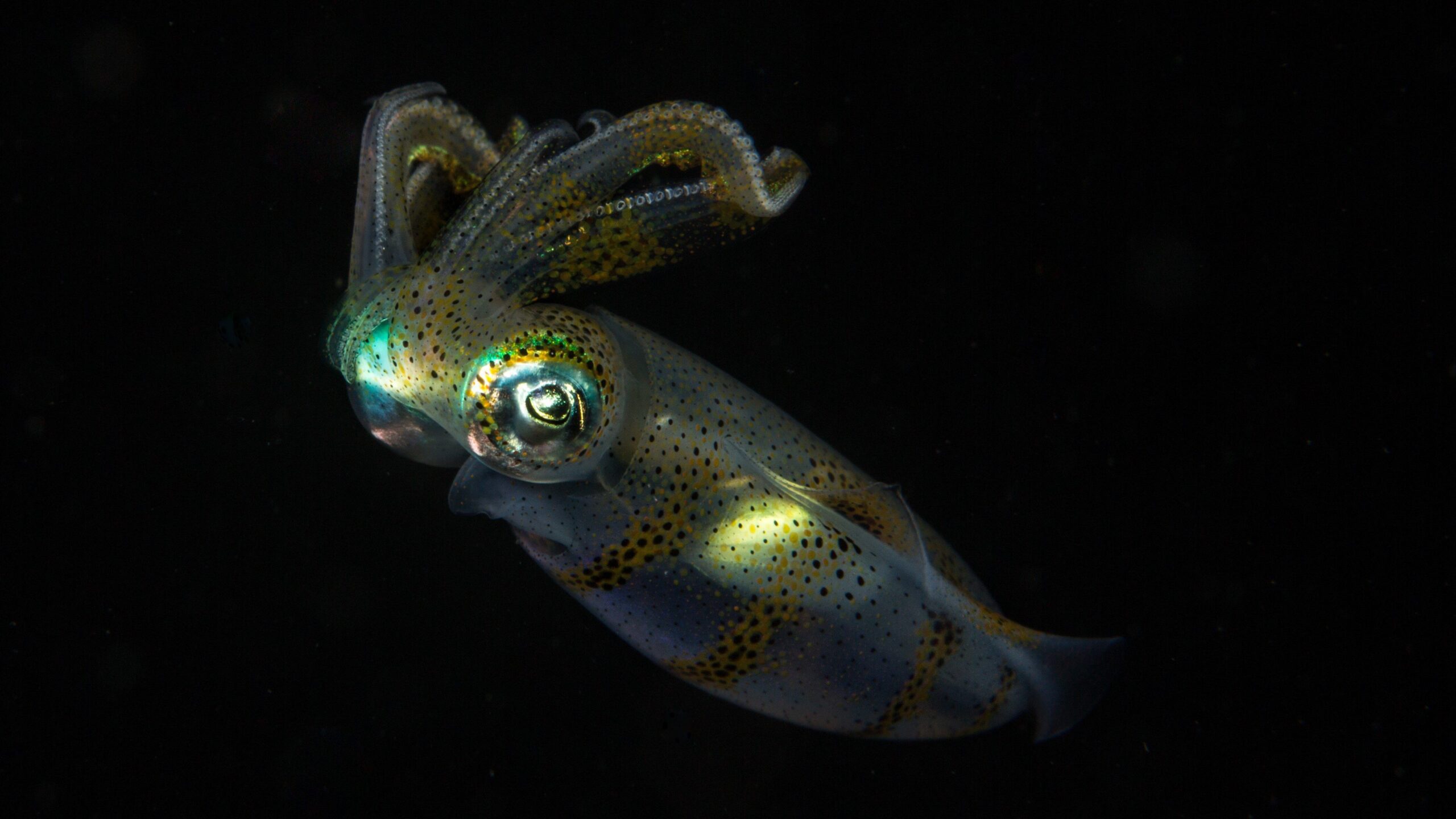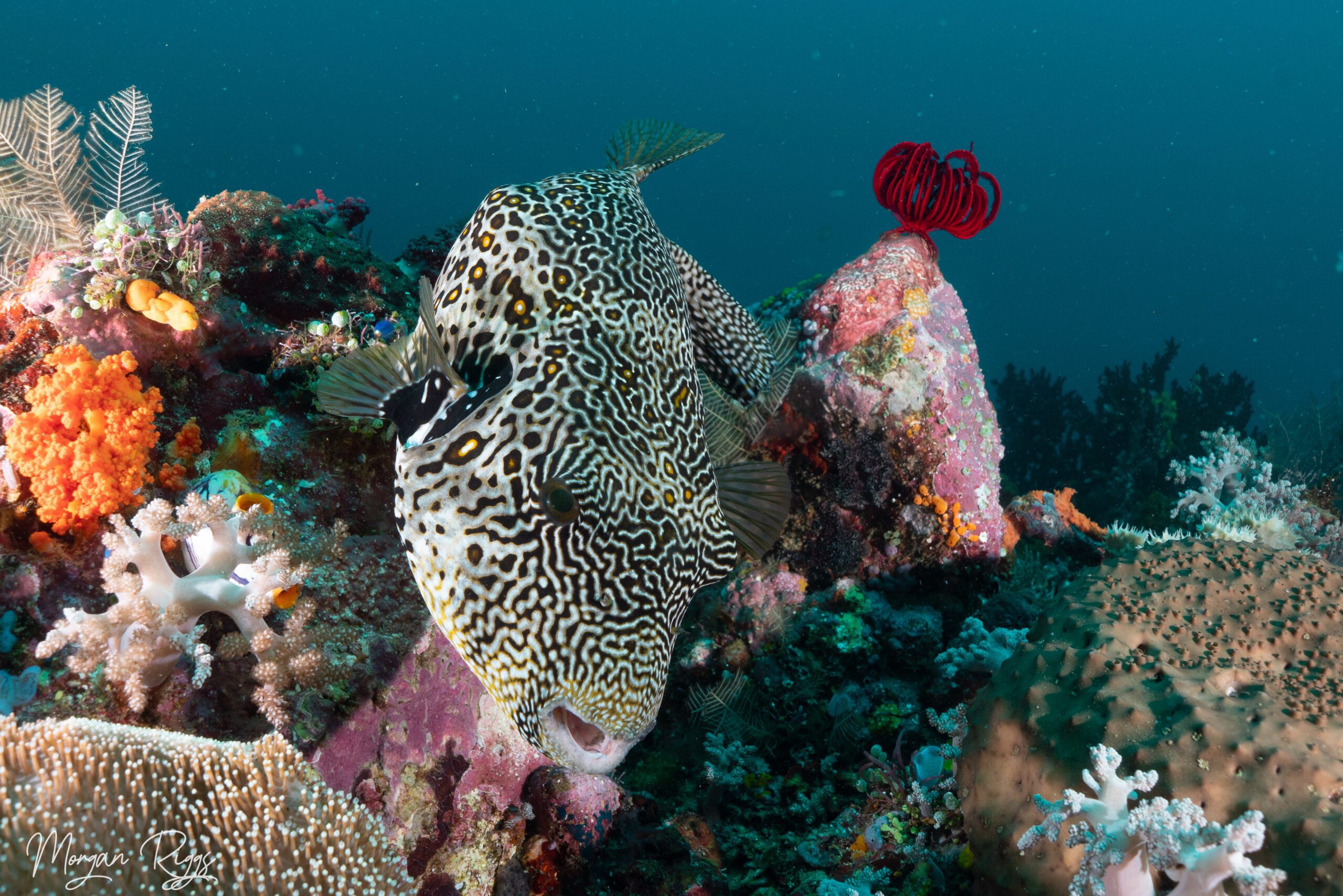
Things you never knew: 7 Facts about Pufferfish
Pufferfish are seen widely across our dive sites and are not often considered to be a “special” find. But we hope that with these 7 facts about Pufferfish, you will recognise how unique and incredible this family of fish really is. With so many species here in North Sulawesi identifying individual species is always fun.
7 Facts About Pufferfish
1. Discovering the Many Species of Pufferfish
Pufferfish are in the family of Tetraodontidae which encompasses around 120 different species. While North Sulawesi boasts a diverse array of pufferfish, not all 120 species are found here. However, you’ll encounter a remarkable number of them at most of our dive sites, including the frequently spotted black-spotted puffer, giant puffer, and the map puffer.
Pufferfish are characterised by their long tapered bodies, rounded heads, prominent lips and large stomachs. Despite the size of their stomachs, it’s surprisingly not used during the digestion process!
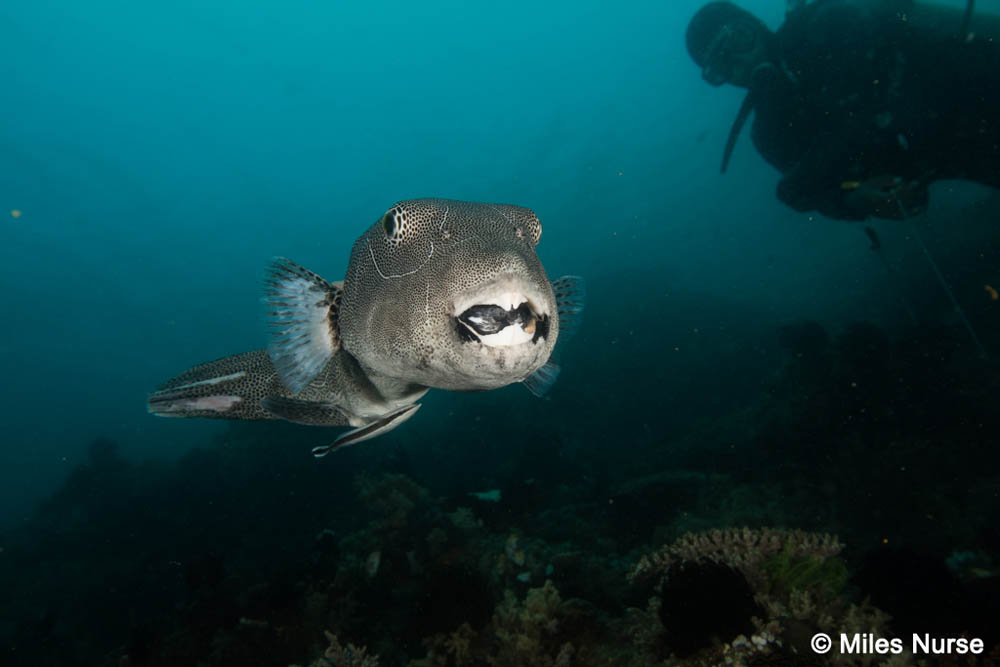
Larger puffer fish species often attract cleaner fish
2. The Pufferfish’s Puffing Defense Mechanism
Many pufferfish are brightly colored and they are not fast swimmers. Therefore, it makes them easy targets for predators looking for an easy meal. When pufferfish feel threatened they can actually “puff up” to three times their original size.
They take air into their stomachs to look larger and also to make themselves into a round, ball-like shape which looks difficult to eat. Some pufferfish also have spines that stick out like needles when they are puffed up. It makes them look like a challenging bite!
3. The Pufferfish’s Deadly Secret
Pufferfish may look slow and steady and even “cute” when swimming around on the reef. However, these are one of the most deadly species of fish. When pufferfish inflate, they release a dangerous chemical on their skin known as TTX (tetrodotoxin).
Did you know that TTX is 100 times more toxic than cyanide? TTX is a neurotoxin that damages the nervous system in such a way that it causes numbness, paralysis and within a few hours, heart and lung failure and death. Signs of TTX poisoning in humans include numbness in the lips and tongue, dizziness, nausea, mobility problems, turning blue and complete paralysis.
One pufferfish carries enough TTX in its liver to kill 30 human adults which makes it the second most deadly creature on the planet, after poison dart frogs. Isn’t that one of the most fascinating facts about pufferfish?
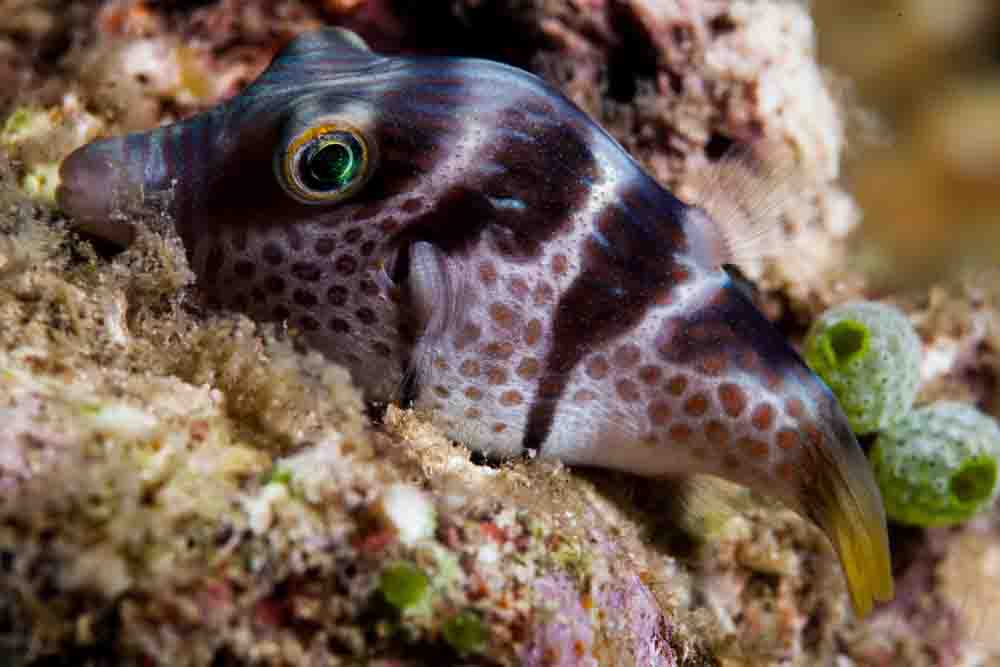
Even the smallest of species are characterised by distinct shaped snouts
4. Masters of Disguise
Octopus are not the only chameleons of the sea, pufferfish can change color by making themselves lighter or darker to match their environments and just like chameleons, they can move their eyes independently so their left eye and right eye are looking in different directions. Meaning they can look at two different things at the same time.
This is a great defence mechanism that enables them to see predators coming from different directions and to swim away or inflate in plenty of time.
5. Unique Teeth of Pufferfish
Did you know that the Greek word for the number four is “tetra” and teeth is “odous”? Put them together and we have Tetraodontidae!
Their unique dental arrangement is what sets them apart from other fish. They have two upper teeth and two lower teeth which give them a beak-like appearance. Their teeth are constantly growing, so to keep them in check they chow down on shell fish, hard corals, algae that grow on rock and bottom-dwelling critters.
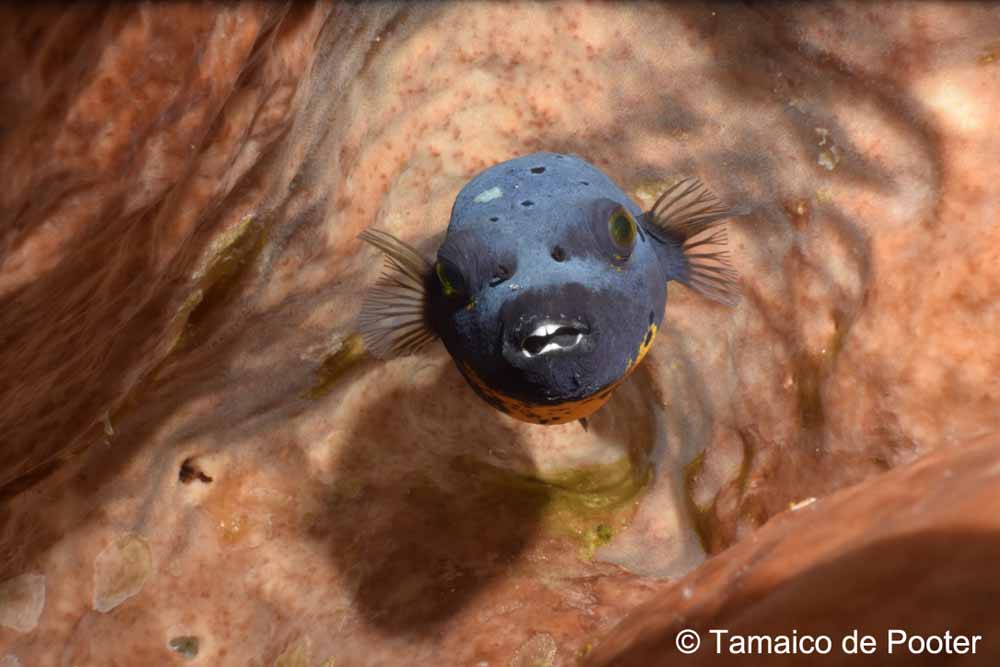
Pufferfish have 4 teeth, 2 upper and 2 lower
6. My Nest is My Castle
In North Sulawesi, the white-spotted puffer, like some other pufferfish species, is known for building nests on the reef. The male pufferfish will make a round-shaped “nest” in the sand which can be up to 6 feet in diameter. Designed to attract females, the nest provides a safe space for them to lay their eggs, allowing the male to fertilize them. Each time a white spotted puffer is ready to breed it will make a new “nest”.
Video Courtesy of BBC Earth Unplugged Series
Found across our dive sites, male masked pufferfish build unique nests from their own sperm. This not only provides them with a hiding place, but the smell also discourages predators. This must be the weirdest of the 7 facts about Pufferfish.
7. Healing and Protecting
Though recognized as one of the world’s most potent toxins, TTX also reveals promising anti-cancer properties. Additionally, female pufferfish ingeniously protect their eggs by passing on small amounts of TTX.
Dive into the World of Pufferfish with Passport to Paradise!

Three distinct destinations brought together by Passport to Paradise
Embark on your own underwater adventure and explore the diverse pufferfish populations of North Sulawesi with our exclusive “Passport to Paradise“! This incredible journey takes you across three distinct dive locations: Bangka, Bunaken, and Lembeh.
So, pack your bags and prepare to be amazed! Dive into the world of “Passport to Paradise” and unlock the secrets of the pufferfish kingdom.
Contact us at your email address: reservations@murexresorts.com or check out our rates guide to learn more


